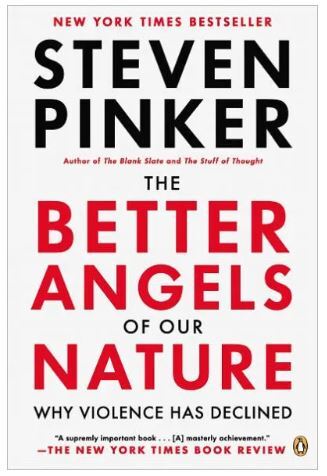
I get raised eyebrows and harumphs of disagreement when I mention this book, but Steven Pinker, Harvard professor and author, makes compelling arguments that violence is declining worldwide, and he backs them up with a trove of statistics and analysis in The Better Angels of Our Nature: Why Violence has Declined.
Granted, his timeframe starts in the Paleolithic, and the book was published in 2011 before the hate-filled debacle of the Trump years, but he has a point: "for most of history, war, slavery, infanticide, child abuse, assassinations, pogroms, gruesome punishments, deadly quarrels, and genocide were ordinary features of life."
Pinker not only proves that these conditions are declining but explains why and when.
Why: Pinke identifies several historical forces.
1. The changing role of government: "Instead of thinking of government as the local franchise of God's rule over his kingdom, people began to think of a government as a gadget invented by humans for the purpose of enhancing their collective welfare." This reduced tolerance for governmental violence against its citizens. The state and judiciary having a monopoly on the legitimate use of force" reduces intrastate violence, he says. And finally, he says, "Democracy… would turn out to be one of the greatest violence-reduction technologies since the appearance of government itself." Read More








